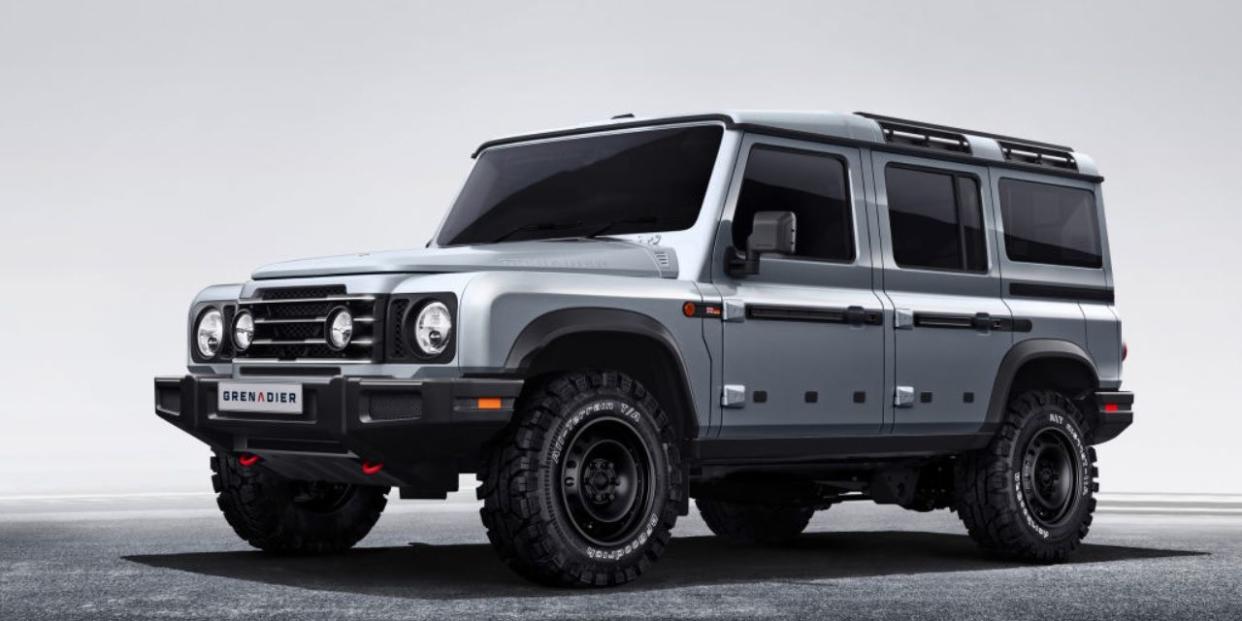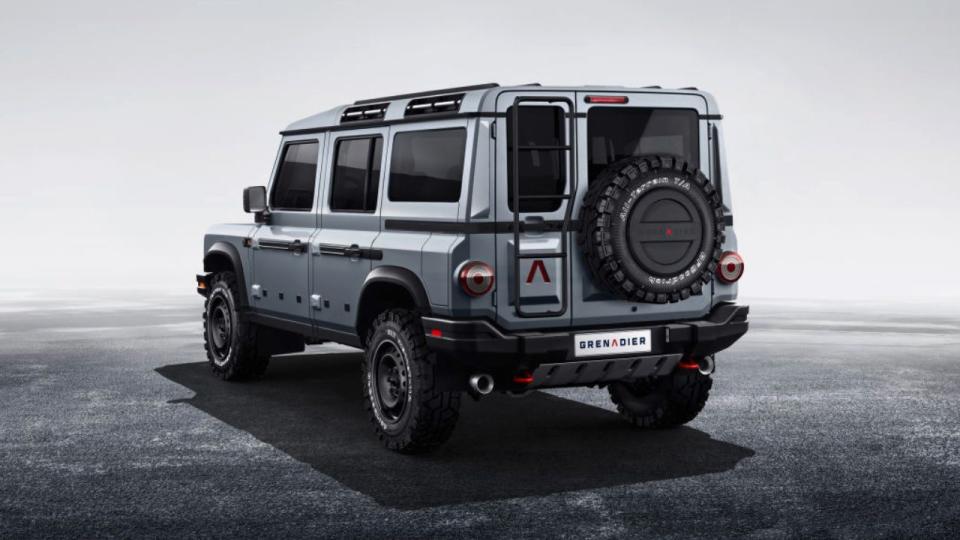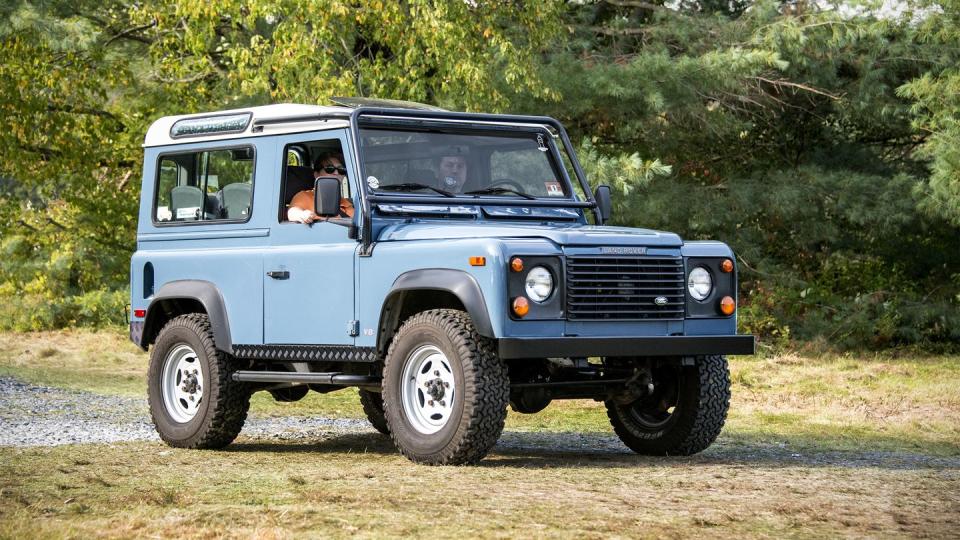Land Rover Loses Defender Trademark Suit to Ineos

When the head of petrochemical giant Ineos, Jim Ratcliffe, set out to produce his own version of the old Land Rover Defender, he faced one pesky problem: Trademark and design patent regimes in various countries tend to frown upon automakers building new vehicles styled closely after existing vehicles produced by other automakers. Ineos might have the money and the means to build its own SUV inspired by the Land Rover Series and Defender models of past decades, but it might not have the intellectual property rights for several design elements of the Defender that the Grenadier features, in Land Rover's eyes.
In a stunning recent decision, the U.K.'s high court court held that the shapes that Land Rover wanted to protect through a design trademark were not distinctive enough to be protected by trademark law, Bloomberg reports. The court noted that while design elements may seem significant to enthusiasts, "may be unimportant, or may not even register with average consumers," Bloomberg noted.
The design of the Grenadier, which after a relatively quick three-year gestation period had been revealed by Ineos a few weeks ago, has been engineered with the help of Magna Steyr in Austria and is now undergoing testing in real-world conditions. The project itself was conceived by Ratcliffe in a London pub called Grenadier three years ago, with the aim to build a rugged Defender-style SUV and pickup duo to replace the departing Land Rover Defender.

"The brief was simple. We set out to design a modern, functional and highly capable 4x4 vehicle with utility at its core," said Toby Ecuyer, head of design. "A design that is 'easy-to-read,' with no ambiguity about the Grenadier's role in life. There to do everything you need, and nothing you don't. Nothing is for show. Modern engineering and production techniques ensure the Grenadier is highly capable, but we have been able to stay true to the essence of creating a utilitarian vehicle that will stand the test of time."
The decision is certainly a disappointing one for Jaguar Land Rover, but we can also appreciate the court's view that granting a trademark to Land Rover for several design elements, some of them common to a number of past and present models produced by other automakers, may have been too sweeping a move, despite the fact that its shape has been trademarked in a number of countries. The Grenadier, for what it's worth, also arguably features elements of the Mercedes-Benz G-Class, albeit a little more distantly, and the G-Class itself, which has been on sale for decades, also bore a number of similarities to the Series Land Rovers and the Defender. However, it's worth noting that Mercedes did not engage Ineos in U.K. courts or elsewhere to protect design elements of the old G-Class that the Grenadier also arguably features.
Of course, trademark law is specific to individual national jurisdictions, so a decision by a U.K. court does not revoke related trademarks in the U.S. or other countries, but it does clear the way for Ineos to market the Grenadier in the U.K., at the very least.
Compare this result with the Jeep and Mahindra litigation over the appearance of the Roxor, which took place in the U.S. following the introduction of the Jeep-inspired Roxor here, if not for actual road use. Mahindra changed the front fascia of the Roxor in early 2020 to differentiate the model from Jeep designs, after a number of court victories by Jeep.

A bigger question for us is why Ineos chose to style the Grenadier so close to the Defender, featuring the famous indented sill line surfacing just above the door handles, the front fender curve and roof profile? Ineos' effort could still have offered an SUV that was close to the Defender in spirit, but one that featured its own unique exterior styling. Instead, it does not really do that, and arguably features a number of design elements associated specifically with Land Rover.
Perhaps that's the biggest missed opportunity here: The Grenadier could have created its own design language rather than following the Defender too closely. The design didn't have to be absolutely modern, like that of the BMW X7 or something similarly sized, but it still could have appeared vintage without looking like a Defender from a hundred yards away. It could still have been boxy without inviting comparisons to the Defender or the G-Class.
To us, this litigation appears to have been very avoidable, especially given the fact that Ineos may have to face Land Rover in a number of countries where Defender design has also been trademarked.
Speaking of BMW, the Grenadier is expected to offer BMW engines if and when it goes into production in 2021, but it won't be a tiny, cottage industry-style effort: Ineos plans to build 25,000 units a year. But just where it will do so is still an open question, as a number of factory sites around Europe have been rumored in recent months. Whether the Grenadier will be offered in the U.S. remains to be seen — Ineos needs a dealer or store network of some kind — and could likely face Land Rover again, this time in U.S. courts.

